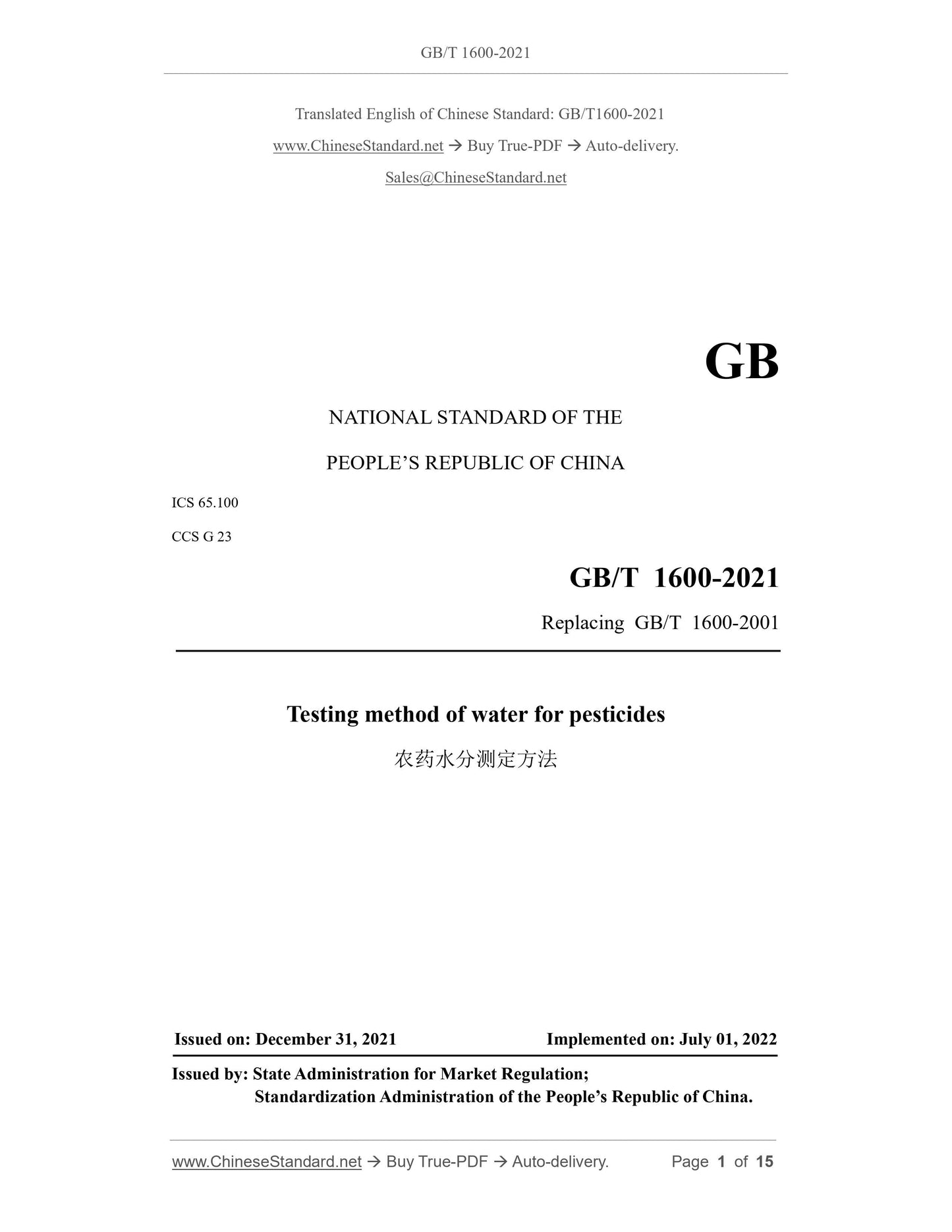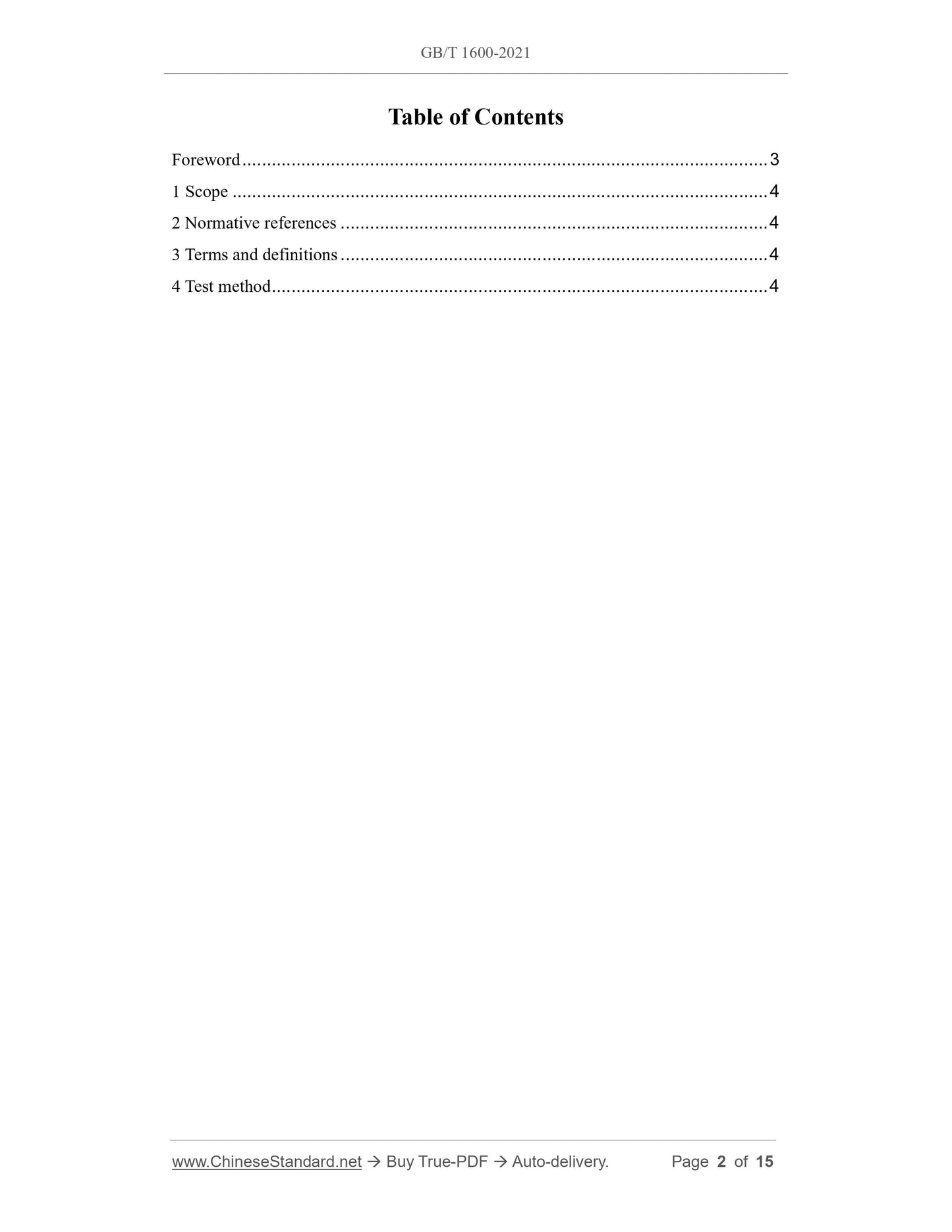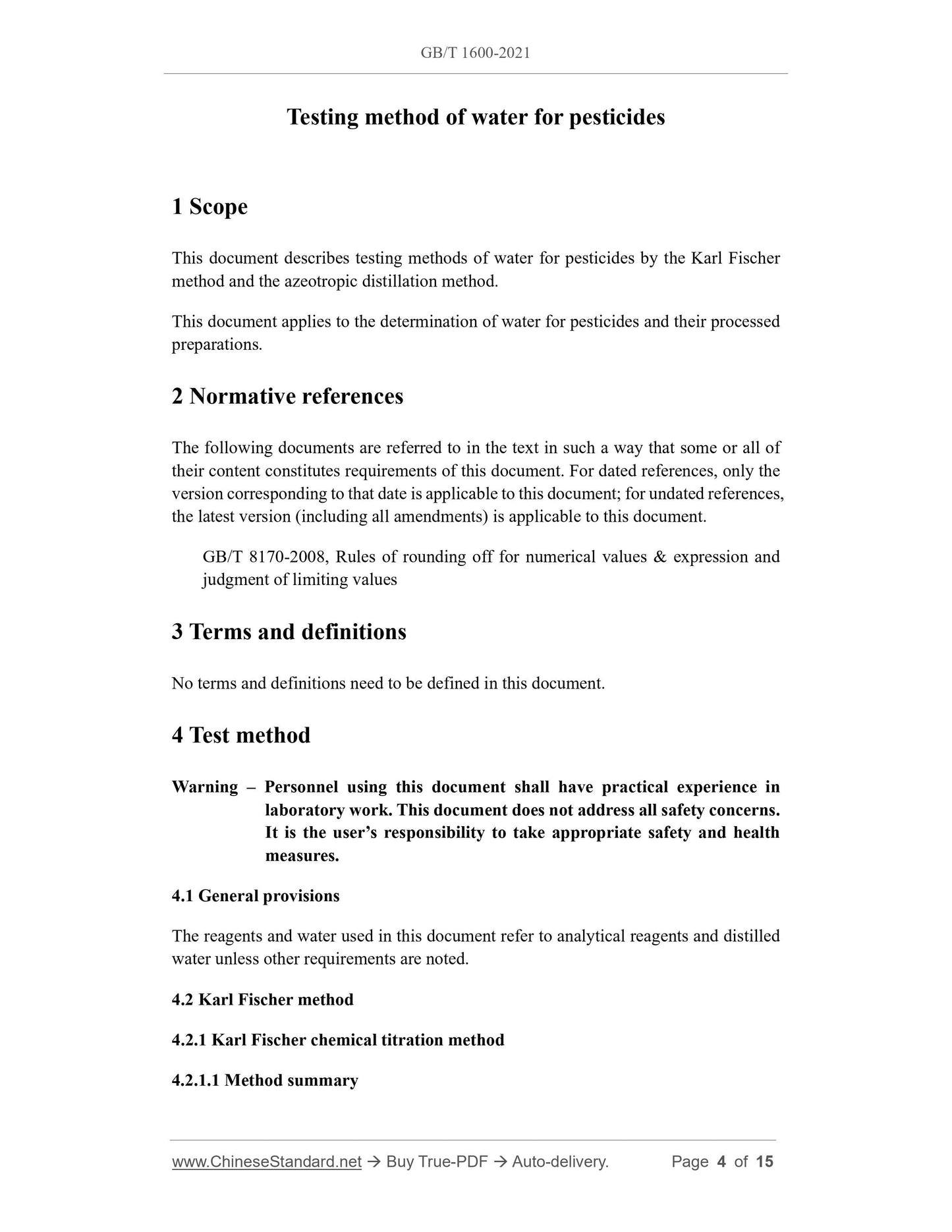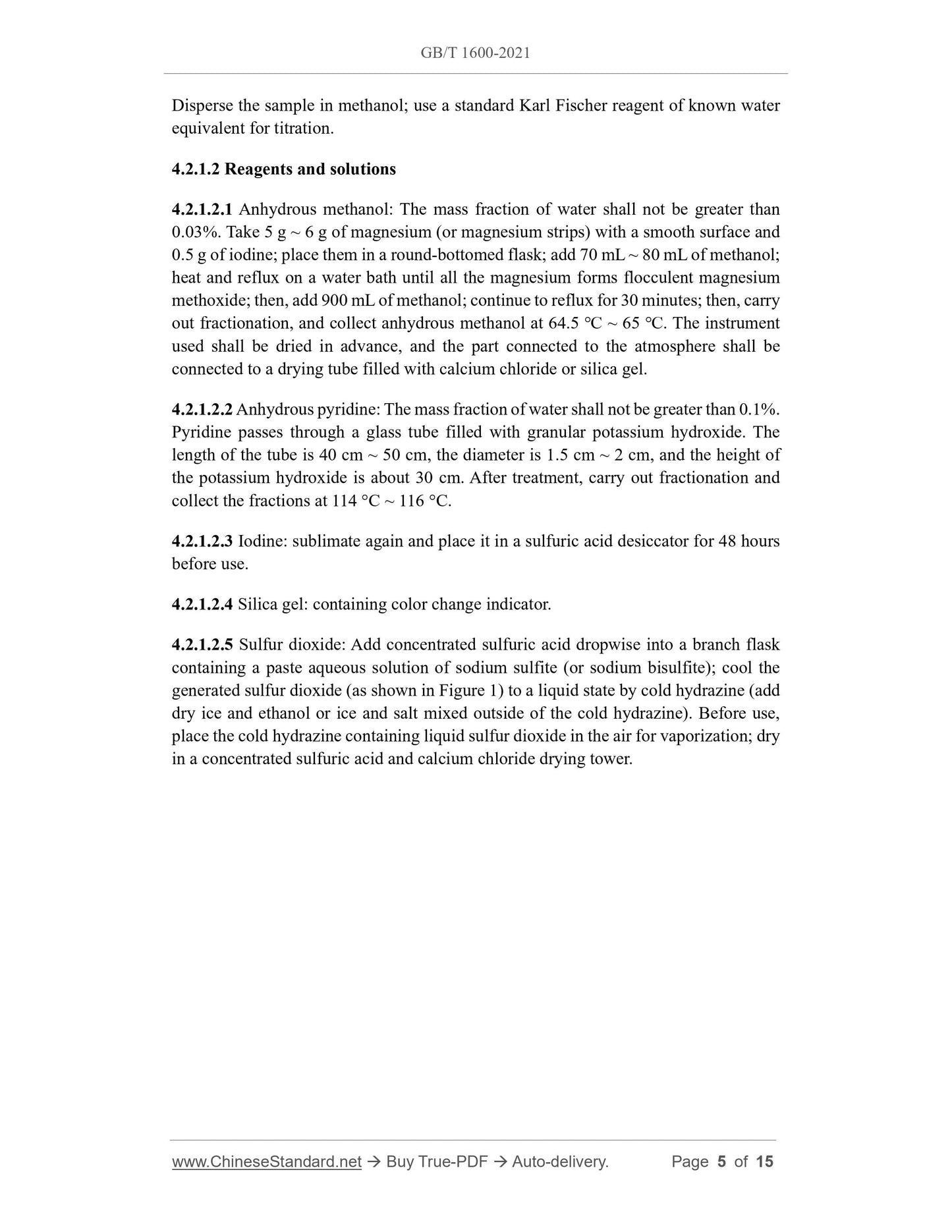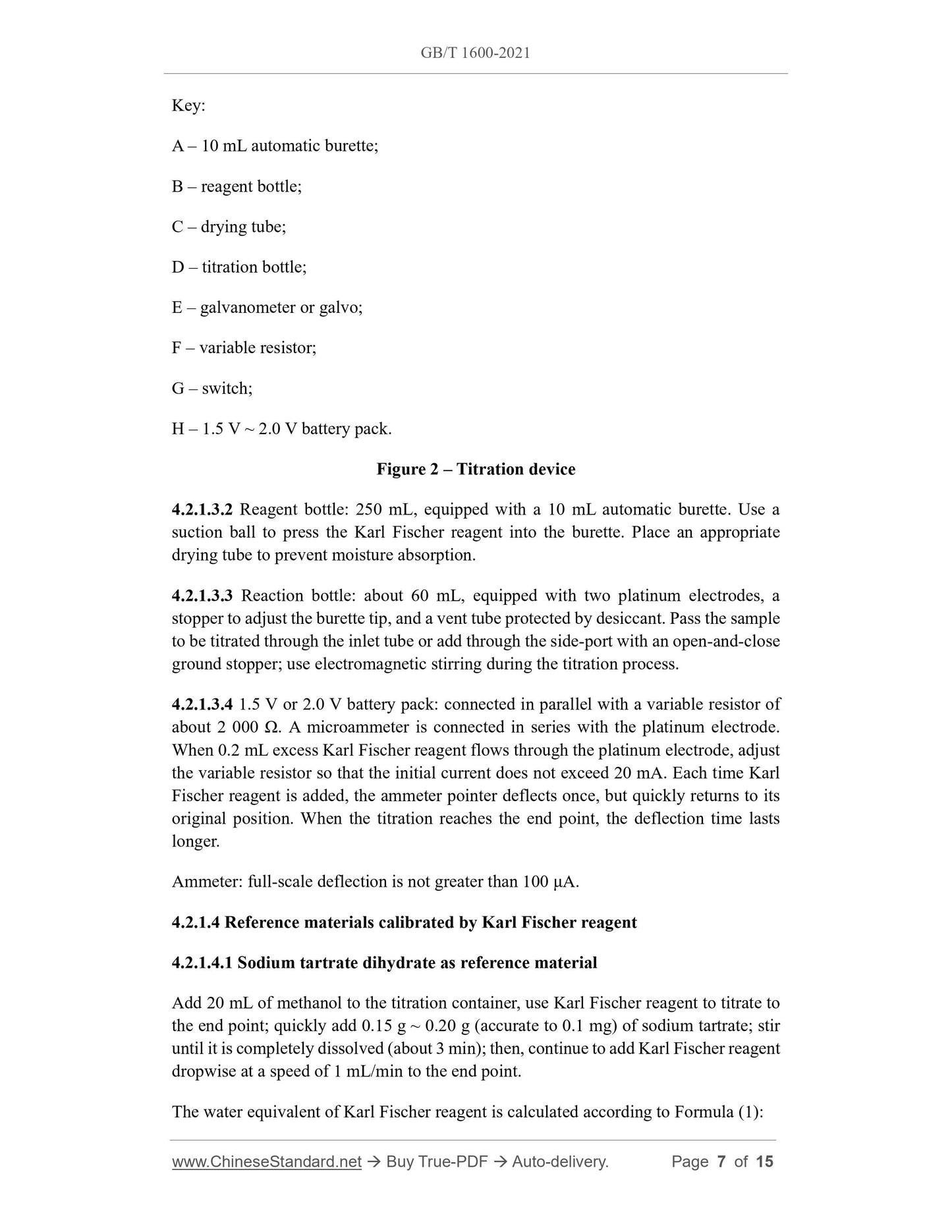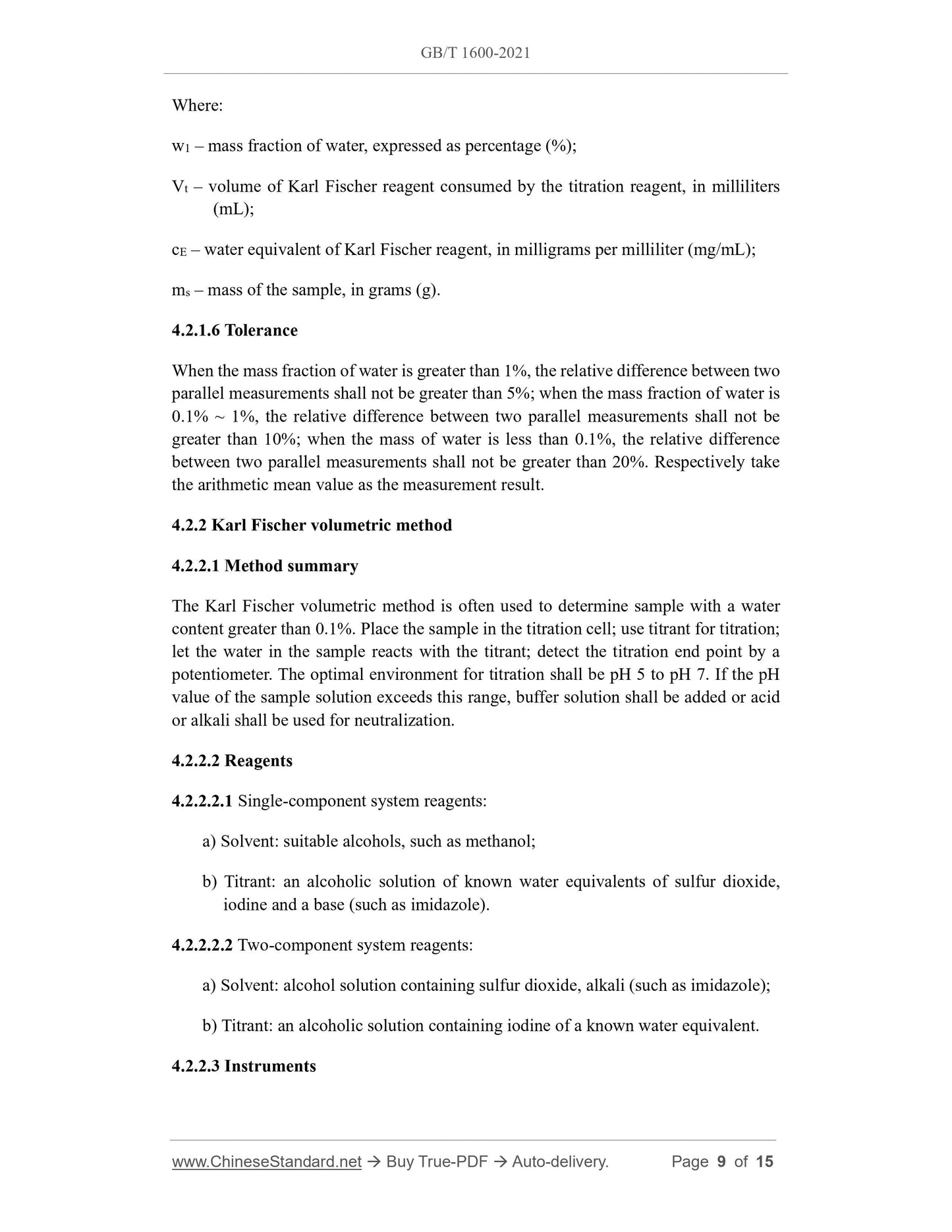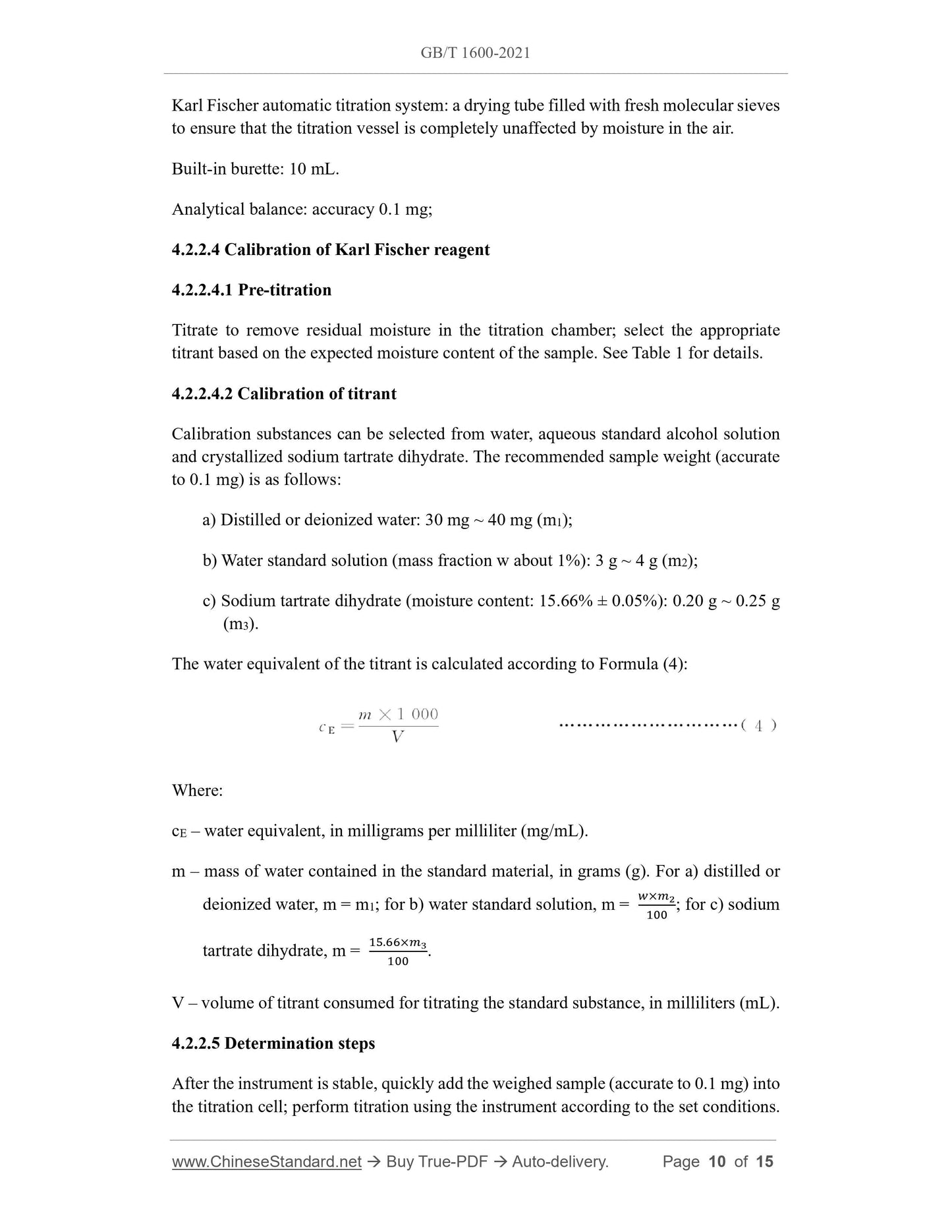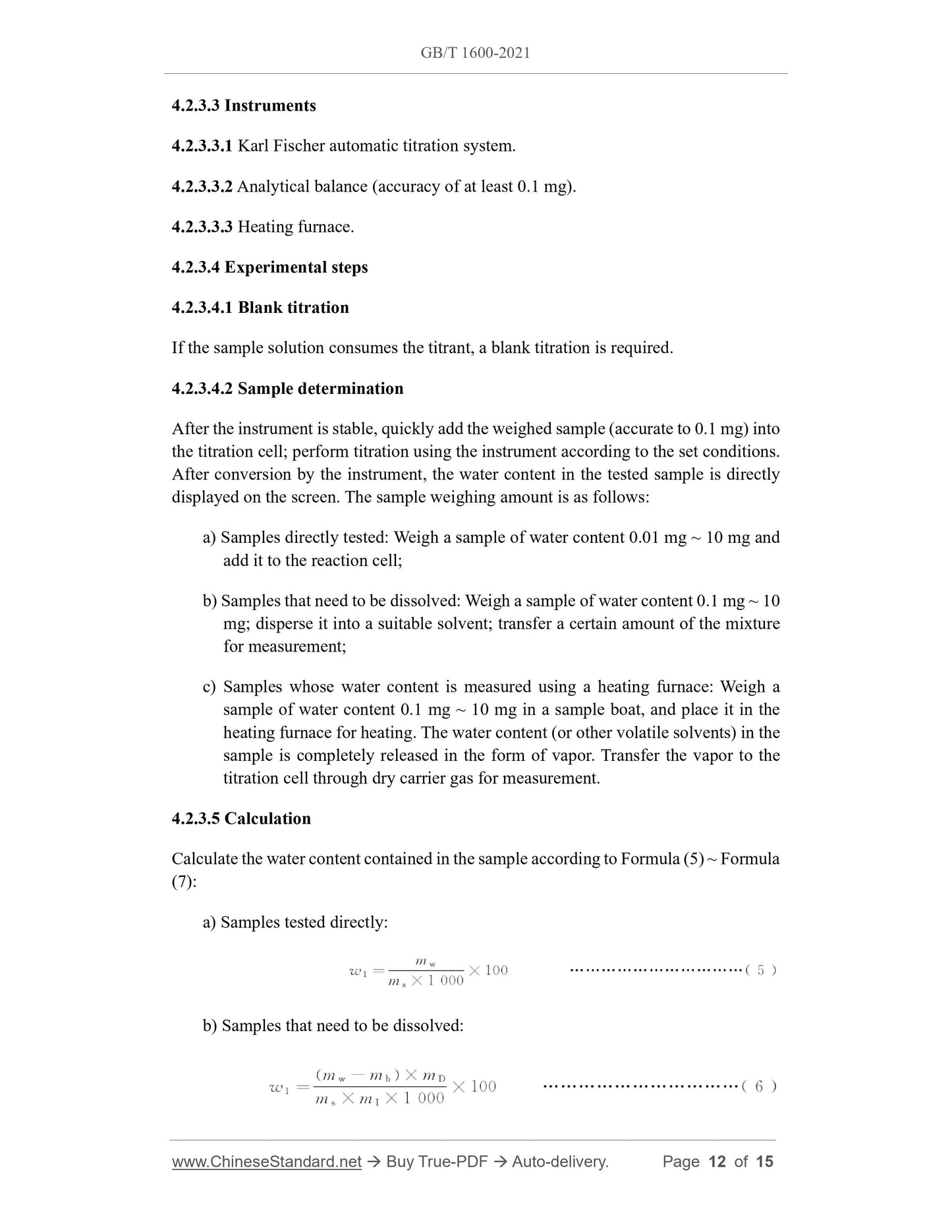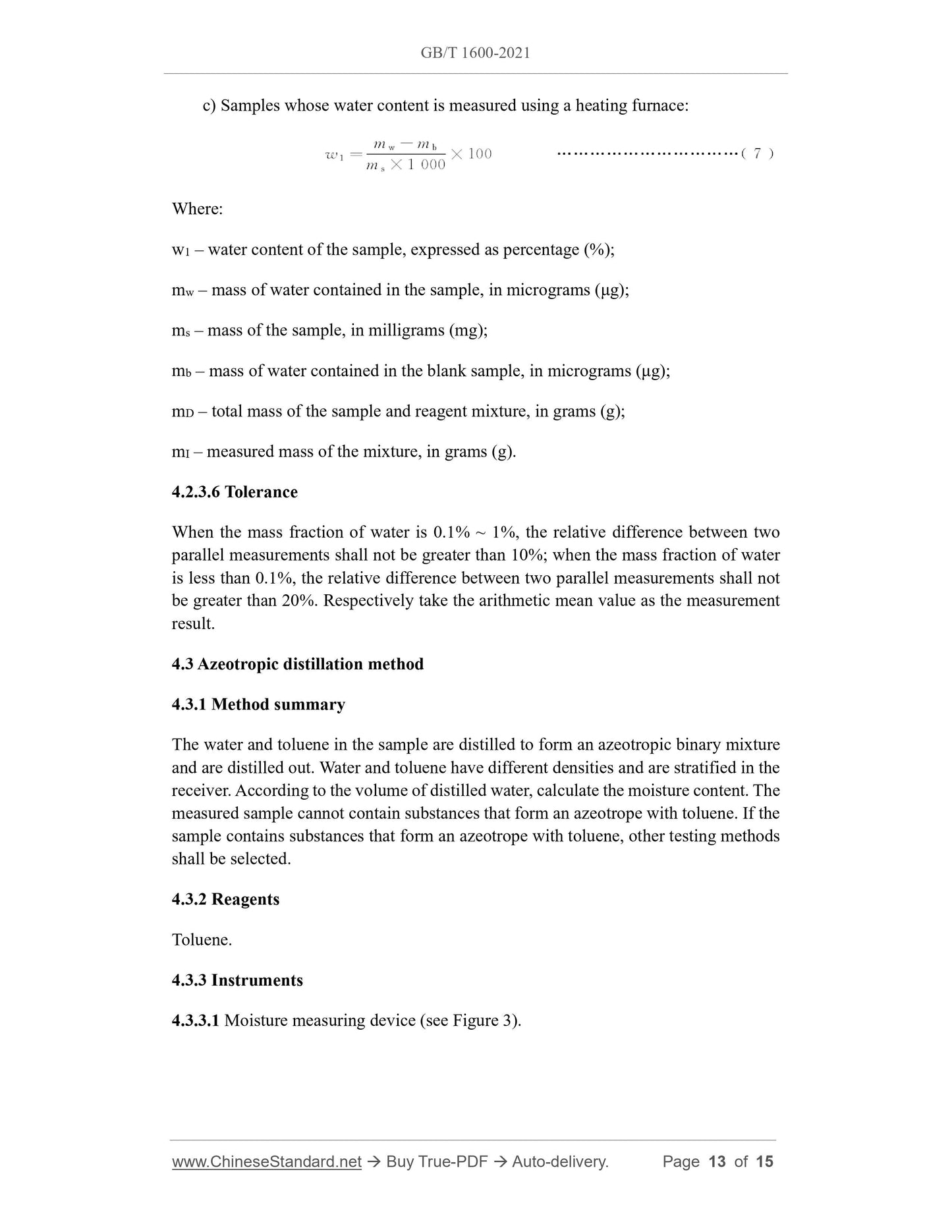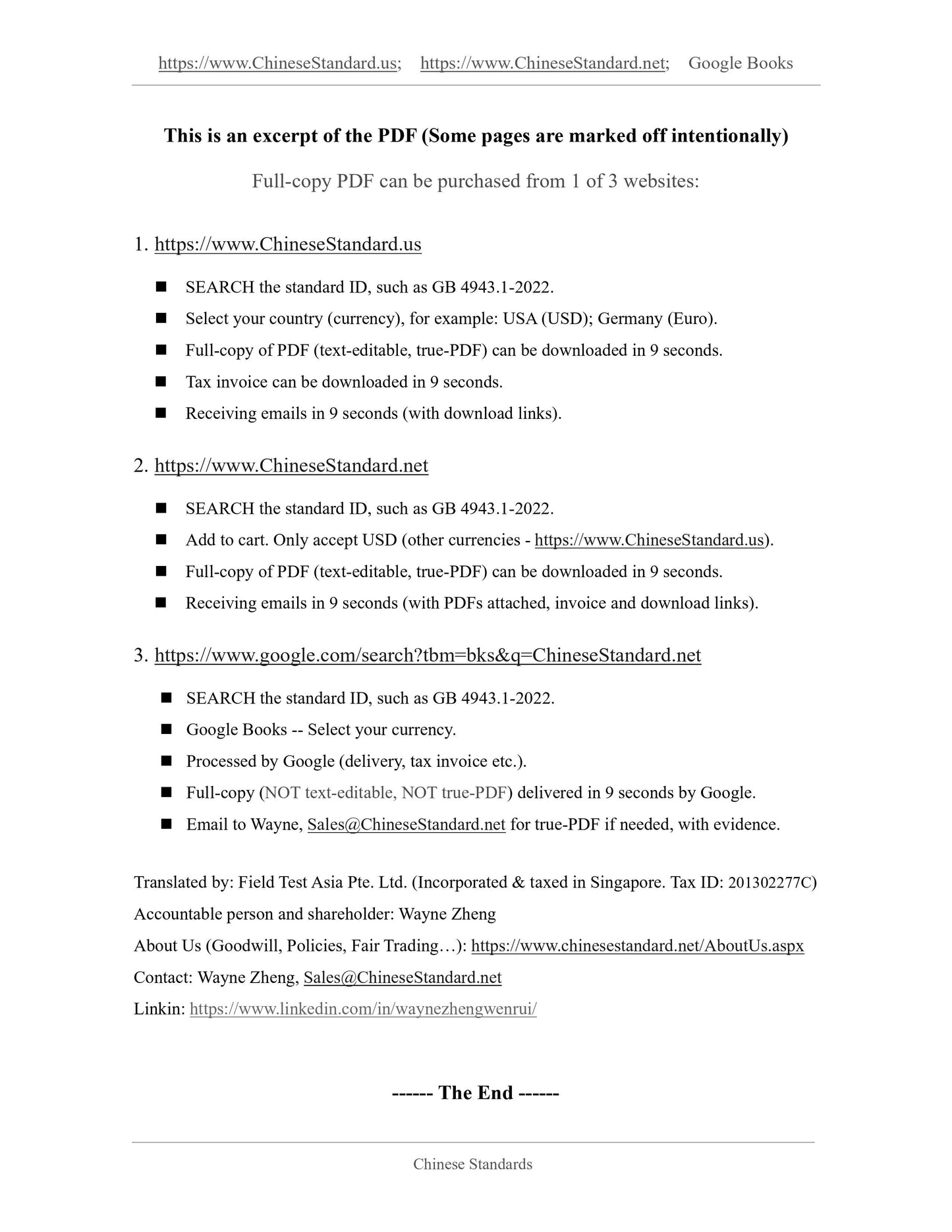1
/
of
10
www.ChineseStandard.us -- Field Test Asia Pte. Ltd.
GB/T 1600-2021 English PDF (GB/T1600-2021)
GB/T 1600-2021 English PDF (GB/T1600-2021)
Regular price
$170.00
Regular price
Sale price
$170.00
Unit price
/
per
Shipping calculated at checkout.
Couldn't load pickup availability
GB/T 1600-2021: Testing method of water for pesticides
Delivery: 9 seconds. Download (and Email) true-PDF + Invoice.Get Quotation: Click GB/T 1600-2021 (Self-service in 1-minute)
Newer / historical versions: GB/T 1600-2021
Preview True-PDF
Scope
This document describes testing methods of water for pesticides by the Karl Fischermethod and the azeotropic distillation method.
This document applies to the determination of water for pesticides and their processed
preparations.
Basic Data
| Standard ID | GB/T 1600-2021 (GB/T1600-2021) |
| Description (Translated English) | Testing method of water for pesticides |
| Sector / Industry | National Standard (Recommended) |
| Classification of Chinese Standard | G23 |
| Word Count Estimation | 10,179 |
| Issuing agency(ies) | State Administration for Market Regulation, China National Standardization Administration |
Share
